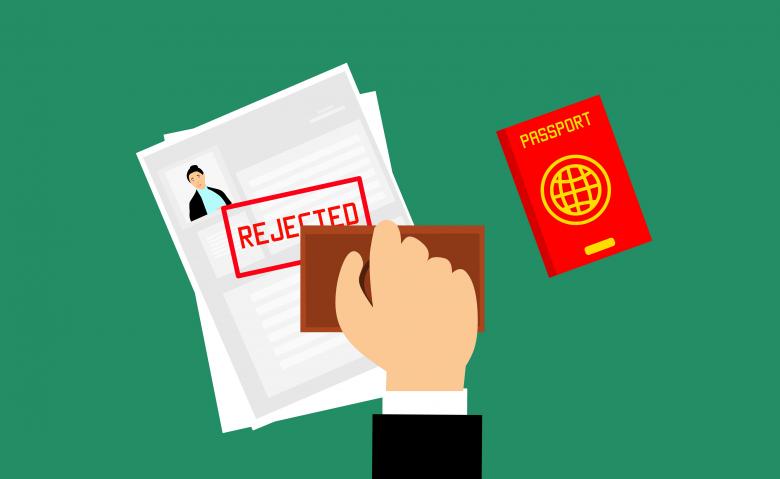By Aviva Luttrell
While some college students are strapped for cash but flush with credit cards, others take the issue of limited funds more seriously.
“I don’t like spending money I know I don’t have,” says Eddie Leary, a senior at the University of Massachusetts Amherst. Leary does not own a credit card.
“Why would you want to have that fear of being even more in debt?”
Leary, and others like him, face the specter of graduating with high student loan debt. Aside from the pressure of paying back that money, studies show that people who enter the workforce with a lot of debt take higher-salary positions, but have lower growth in earnings over time.
“What that seems to suggest is that people who graduate with these large student loan payments that start six months to a year after they graduate, are forced to be sort of short-sighted economically,” says Zac Bissonnette, personal finance writer and author of the book “Debt-Free U.” “They have to earn as much money as quickly as possible to make these loan payments.”
Estimates by the Consumer Financial Protection Bureau show that in May 2013, the outstanding student loan debt was approaching the $1.2 trillion mark, surpassing the total amount Americans owe on their credit cards and auto loans combined.
With debt on their minds, college students are more savvy about staying away from short-term credit.
Over the past two years, the percentage of college students with credit cards has declined from 42 to 35 percent, according to “How America Pays for College,” a research study published each year by student loan provider Sallie Mae and global market research company Ipsos.
Public outcry against credit card companies that marketed aggressively to students led to tighter controls, which ultimately helped bring down credit card debt among young people. Similar action is needed now, only aimed at student loan debt, some say.
Before 2009, when President Obama signed the Credit Card Accountability Responsibility and Disclosure Act, credit card companies routinely targeted college students by offering free merchandise and other incentives to apply for credit. Since college students tend to have limited funds and lack financial management experience, many found themselves burdened with high interest payments and late fees. The new law prohibits lenders from issuing credit cards to anyone under 21, unless they have either a co-signer with the financial means to pay off their debt or proof that they can cover their bills on their own. Additionally, colleges and universities must publicly disclose contracts or agreements made with credit card issuers for marketing purposes under this act.
New Jersey has taken it a step further with a new law prohibiting credit card companies from marketing to students at public colleges.
“These kids are carrying enough debt through student loans, through whatever costs they have for education,” New Jersey Assemblywoman Celeste Riley told the Philadelphia Inquirer shortly after the bill was passed earlier this year.
While there’s no clear answer to the problem of high student loan debt, efforts should be made to educate students and their families about ways to borrow wisely.
“We think that what needs to be done is that students need to be made more aware of ways that they can borrow less for college, borrow the right type of loans and repay those loans using all the repayment plans they have available,” said Allesandra Lanza, spokesperson for American Student Assistance (ASA), a nonprofit dedicated to helping students manage higher education debt.
According to Lanza, students should be exhausting all other options, such as scholarships and grants, before turning to loans to pay for college.
When students do borrow money for college, she says, the vast majority take out federal loans, with more expensive private loans accounting for less than 15 percent of the $1.2 trillion figure.
According to research from Sallie Mae and Ipsos, “The continuing upward trend in the percent of students using federal student loans has driven most of the increase in student borrowing which has grown from 25 percent in 2009… to 34 percent in 2012.”
With the income-based repayment options that are available today, Bissonnette said that these federal loans are not nearly as toxic as they once were
However, in noting studies that show student loan debt seems to slow earning growth, Bissonnette said that the implications of graduating with enormous amounts of debt are still far reaching.
Graduates saddled with high debt are eager to earn as much as possible right away, but this comes at the expense of long-term career planning. Not only are people who graduate with high loan debt choosing jobs they like less, but they’re limited on where they can live, and how much they can save for retirement. Some experts say many even feel they have to put off marriage because of their financial situation.
Bissonnette has some advice for those hoping to avoid racking up large bills.
“So much of it comes down to choice of college,” said Bissonnette, who emphasized that students can get a good education at state schools for much less than they’d pay at a private college or university. Today, however, even public schools are much less affordable than they once were.
“What has driven cost increases is declining state support for public education,” said Bissonnette. “State appropriations have tanked over the last 30 years.”
Some students still find ways to cut costs. Before transferring to UMass last year, Leary, the UMass senior who doesn’t own a credit card, attended Holyoke Community College. This, he said, made his education much more affordable.
“Since I knew my parents were going to be helping me out, I wanted the cheapest route I could,” he said. “That was a significant help. I think my entire associates degree cost around $7,000.”







